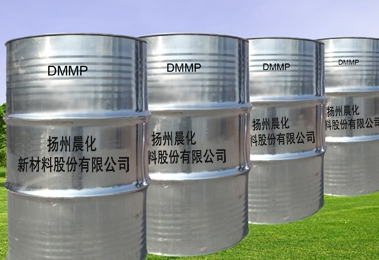Organophosphorus phosphorus flame retardants are mostly oily. They are not easy to add in the process of polymer processing. It is commonly used in polyurethane foam, soft PVC, transformer oil, cellulose resin, natural rubber and synthetic rubber. So what is phosphorus flame retardant? What is its flame retardant principle? Let's get to know.
Phosphorus flame retardants are mainly divided into inorganic phosphorus flame retardants and organic phosphorus flame retardants. The main products of phosphorus containing inorganic flame retardant are red phosphorus flame retardant, ammonium phosphate and ammonium polyphosphate. Inorganic phosphorus series products have the advantages of good stability, no hair, no corrosive gas, long-term, low toxicity and so on. Among them, the flame retardant effect of red phosphorus is better than that of phosphate.

Phosphorus containing additives play an important role in the condensed phase. The flame retardant mechanism is as follows:
The formation of phosphoric acid as a dehydrating agent promotes the formation of carbon, thus reducing the heat transfer from flame to condensed phase.
Phosphoric acid absorbs heat because it prevents carbon monoxide from oxidizing to carbon dioxide and reduces the heating process.
A thin glass or liquid protective layer is formed on the condensed phase, which reduces the diffusion of oxygen and the heat and mass transfer between gas and solid, inhibits the process of carbon oxidation, and reduces the thermal decomposition of phosphorus containing flame retardants. The following changes have taken place: phosphoric acid - polyphosphate - polyphosphate - polyphosphate, polyphosphate. Acid is a non-volatile and stable compound, which has a strong dehydration effect and is separated from the air on the surface of polymer. The dehydrated water absorbs a lot of heat, which decomposes the flame retardant on the polymer surface and releases volatile phosphide. Mass spectrometry analysis shows that the concentration of hydrogen atom is greatly reduced.
When phosphorus flame retardant is used alone, its flame retardant effect is poor. The flame retardant function of phosphorus flame retardant is to promote the dehydration and carbonization of polymer in the initial decomposition process. The dehydration and carbonization process must depend on the oxygen-containing group of the polymer itself and the polymer with its own structure. They have better flame retardancy. For polypropylene, the flame retardant effect of phosphorus flame retardant alone is not good because there is no oxygen group in its molecular structure. However, when mixed with Al (0h) 3 and Mg (OH) 2, it can produce synergistic effect and obtain good flame retardant effect.